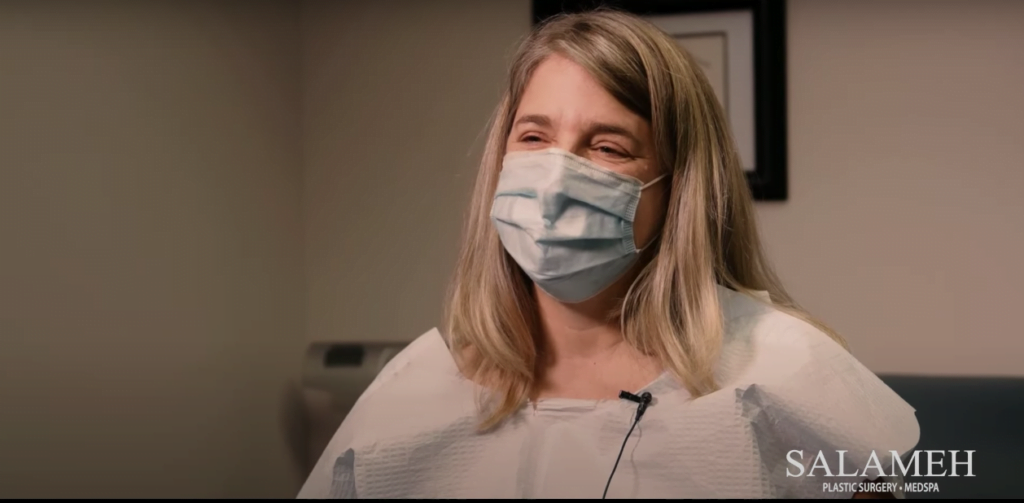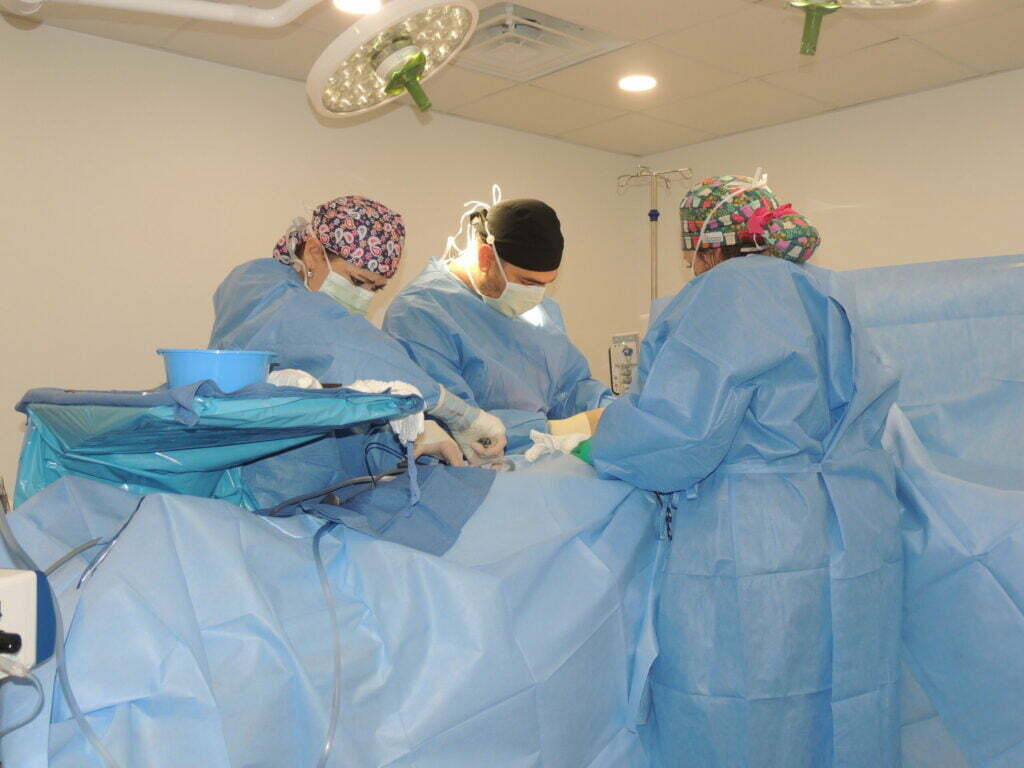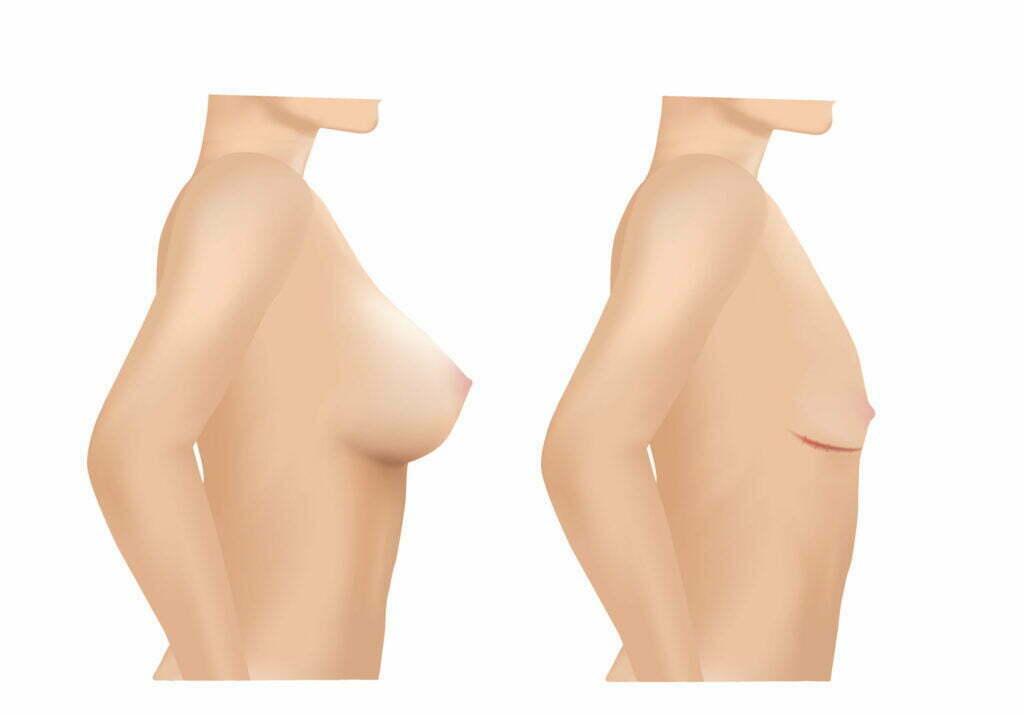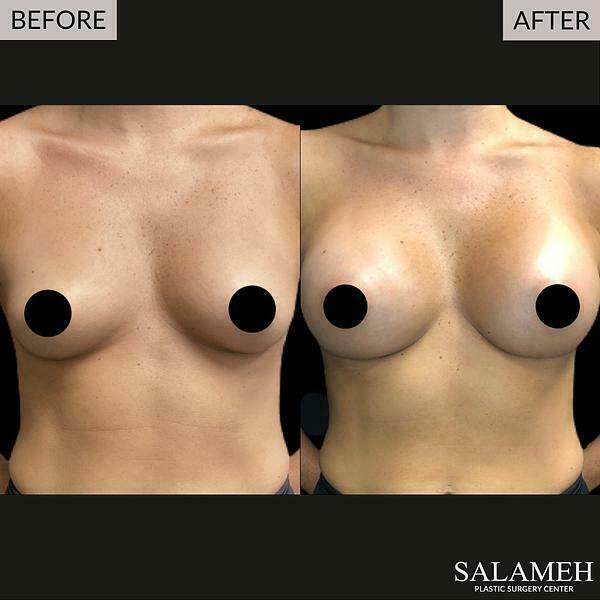Table of Contents
Breast Implant Removal: Everything You Need to Know
People might want to remove their implants for various reasons, such as medical issues, personal preferences, or wanting to have fresh ones. This is where breast implant removal comes in.
And, as with any procedure, you want to know what you’re getting into and what risks you might be taking.
So in this article, we’ll take a closer look at breast implant removal and what you need to consider before you decide to go through with it.
Breast Implant Removal
Breast implant removal involves the surgical removal of breast implants, generally through pre-existing scars or new incision sites on the breast.
This procedure aims to remove the breast implants and any scar tissue that forms around the implants.
The surgery itself is pretty straightforward—the surgeon takes out the implants, and if needed, they’ll also clean up any scar tissue or silicone that might have leaked out.
When to Consider Breast Implant Removal

The decision to have your implants removed can be for either personal or medical reasons.
But the most common reasons for implant removal are personal preference about the breast size or shape due to problems that cause distortion or pain in the breast.
Medical Reasons
Getting your breast implants checked out every 10 to 15 years is a good idea to ensure everything’s okay.
Otherwise, you might end up with capsular contracture, where the scar tissue around the implants gets all hard, painful, and uncomfortable.
But sometimes, you might need to get rid of them sooner than that.
You may need to have your breast implants removed due to the following:
- leaking of the breast implant
- pain related to the implants
- shifting or movement implant/s
- buildup of calcium deposits around the implant
- autoimmune response to the implant
- necrosis around the implant
- breast implant-associated anaplastic large cell lymphoma – a very rare breast cancer that could occur in tissues around an implant.
Your surgeon may not recommend that you have them removed if you don’t experience any complications.
Personal Reasons
Our bodies are constantly changing. Whether from having kids or getting older, our breasts are bound to change. And if you’ve got breast implants, those changes can affect how they look too. Or maybe you’ve decided that implants aren’t for you anymore or want to switch things up with a new size or style.
The good news is that removing breast implants or getting them replaced is a safe and standard procedure that can help you feel more like yourself again.
Sometimes, people choose to replace their old implants with new ones, but other times they just want to go natural. It’s all up to you.
So feel free to talk to your doctor about your options and what might be best for you. Because at the end of the day, feeling comfortable and confident in your own skin is what matters.
What Does the Procedure (Breast Implant Removal) Involve?

Preparation for surgery
When removing or replacing your breast implants, you’ll want to find a plastic surgeon with the skills and experience to do the job right.
Before the surgery, you’ll meet with your surgeon to discuss your goals. They’ll ask you about your medical history, previous surgeries, and what medications you’re taking.
They will try to understand your overall health and ensure you’re a good candidate for the procedure.
It’s essential to communicate well with your surgeon and feel comfortable asking any questions you might have. After all, this is your body we’re talking about! So don’t be shy about speaking up and ensuring you’re on the same page about what you want and what’s possible.
During the consultation with your surgeon, they will take pictures of your breasts, give advice based on what you want to accomplish, make sure your health is in good condition, and explain any potential dangers or issues that may come up.
Before the surgery, you will be given further instructions on how to prepare yourself for the surgery, such as when to abstain from eating and drinking, how to bathe before the procedure, and what to wear when reporting to the preoperative area.
The Surgical Procedure
At the time of a surgical procedure, an anesthesiologist provides medicine to help the patient remain free of pain. This could take the form of IV sedation to help them feel at ease or general anesthesia that puts them into a state of unconsciousness.
After the anesthesia, the procedure itself will likely involve the following steps:
Skin preparation
A nurse will cleanse your breasts with antibacterial soap or cleansers. This step is a vital part of the preparations because it helps to minimize the risk of infection during the procedure. The nurse will ensure your skin is clean and free from any bacteria that could cause complications.
Making an incision
Your plastic surgeon will make an incision to access the breast implant. The incision location depends on the implant’s placement and can be made under the breast or around the areola.
Your surgeon will choose the best option for you to ensure a safe and effective surgery.
Removal of the implant and tissue capsule
Whether or not the tissue capsule around your implant is removed depends on your implant issues or surgery goals. Over time, scar tissue naturally forms around the implant, creating the capsule. Your surgeon may remove only the implant or part or all of the capsule.
This decision is based on factors such as the capsule’s condition, potential complications, and your desired outcome.
Incision closure
After removing or replacing the implants, your surgeon will close the incisions using sutures or adhesives and apply dressings or bandages to protect the incisions.
Drains may also be used to reduce swelling. Your surgeon will discuss these details before the procedure to ensure a safe and effective recovery.
Recovery After Breast Implant Removal Surgery

After surgery, you will receive specific instructions for recovery. Your surgeon will tell you:
- How to care for your incisions
- What activity should you restrict in the meantime
- What medications to take
- How to safely bathe
- When to consult your doctor regarding potential complications
The healing process also varies. But the recovery from breast implant removal typically takes several weeks.
It’s normal to have pain, discomfort, and swelling shortly after the procedure. Moving your arms and upper body around, as usual, will also be challenging.
You may wear a special support bra or a compression garment to reduce swelling for a few weeks. You may also be placed with drains underneath your skin. These tubes ensure that you drain any excess fluid or blood and usually come out after a few days but may stay in place for up to 10 days or more.
Breasts After Breast Implant Removal Procedure
The results of breast implant removal can vary from person to person, depending on their case.
Here’s an example of a breast implant removal before and after.

Breast Implant Surgery and Lift
Some may experience a relief of discomfort and symptoms related to their implants, while others may notice changes in the shape and size of their breasts.
Achieving the desired aesthetic results may require additional procedures such as a breast lift.
You may want to check: Teardrop Breast Implants: The Pros & Cons
That’s why it is essential to have realistic expectations and openly discuss your goals with a qualified plastic surgeon to understand what can and cannot be achieved with the procedure.

Flat After Breast Implant Removal
If you’ve recently had your breast implants removed and are experiencing a flat after breast implant removal or deflated appearance, don’t worry. It’s normal for the breast tissue to take some time to adjust and regain its shape.
However, if you’re unhappy with the results, you can talk with your surgeon about options available to help restore volume and improve the overall appearance of your breasts. One option is to undergo breast augmentation.
For board-certified plastic surgeons, see the following sites:
American Society of Plastic Surgeons
American Board of Plastic Surgery
How Much Does Breast Implant Removal Cost?
The average breast implant removal surgery typically costs around $3,049.
This represents the cost of the surgery, including the surgeon’s fee. The cost of breast implant removal does not cover any additional services, such as anesthesia and facility fees, nor does it cover the cost of any post-surgery treatments or supplies, like medications or bras.
Breast Implant Removal Benefits
Breast implant removal has a few benefits. Getting the surgery may affect the following:
- Pain Relief: Getting surgeries to remove implants can give instant pain relief if you have capsular contracture.
- Natural Looking Results: Breast implant removal can restore the breasts to their natural shape and size. This can be especially beneficial for those no longer happy with the look of their implants, whether it be the size, shape, or feel or who have experienced issues.
- Improved Mood: Breast implant removal has emotional and psychological benefits. Some patients experience depression or anxiety related to their breast implants; removing them can help relieve those feelings.
Breast Implant Removal Risks
Most patients have their breast implants removed with minimal to no complications. But like any procedure, know that breast implant removal surgery has potential risks.
Your surgeon must address the risks with you so you can think over whether surgery is the right option for you. Removal of breast implants can be accompanied by various risks, such as:
- pain
- scarring
- discolored skin
- bleeding
- infection
- nausea
- allergic reactions
- nerve damage that can lead to the loss of nipple sensation;
- and fluid accumulation
When Should You See A Healthcare Provider?
Contact your surgeon right away if you experience the following:
- pain or swelling doesn’t go away within several weeks
- pain and swelling get worse
- you have any unusual symptoms
- Fever and chills
- Nausea or vomiting
- Shortness of breath (dyspnea)
Breast Implant Removal in Indiana and Kentucky

If you’re in Indiana and Kentucky and thinking about getting your breast implants removed, you’re in good hands with our double-board certified surgeons at Salameh Plastic Surgery Center.
We offer breast implant removal procedures to help you feel confident and comfortable in your skin again. From consultation to recovery, we’ll be there for you every step of the way.
Contact us today to learn more about our breast implant removal services.
Breast Implant Removal Takeaway
Everyone has different reasons for considering breast implant removal, and that’s perfectly fine. If you’re considering getting them removed, it’s crucial to have a heart-to-heart talk with your surgeon.
Make sure to discuss your expectations, the recovery period, and any potential complications that may arise. By having a transparent conversation with your surgeon, you can make a well-informed decision about whether breast implant removal suits you and fully understand what to expect from the procedure.
You may also want to check our recent posts:

